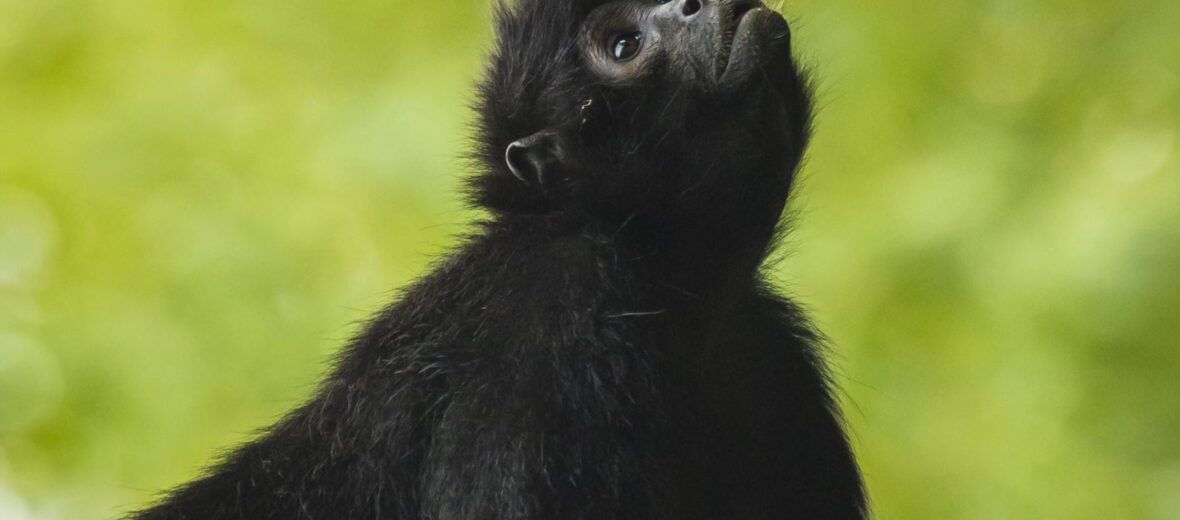
The black-headed spider monkey is a New World monkey that hails from Central and South America. They prefer humid forests, cloud forests, and dry forests. There are 2 subspecies of these spider monkeys: the black-headed and the brown-headed spider monkey. Due to hunting, habitat destruction, and human interference, these cool monkeys are sadly listed as Critically Endangered by the IUCN and their numbers are decreasing.
First the Stats…
Scientific name: Ateles fusciceps
Weight: Up to 15 lbs.
Length: Up to 19 inches, plus up to a 33.7 inch tail
Lifespan: Up to 24 years
Now on to the Facts!
1.) These monkeys are diurnal (active during the day).
2.) Like all spider monkeys, they are predominantly arboreal (spend their lives in trees).
3.) Forming large fission-fusion groups of up to 100 individuals is common. These groups are comprised of multiple males and females.
4.) They are extremely agile climbers able to walk upright on branches.
5.) A group of spider monkeys is called a barrel, cartload, tribe, troop, or wilderness.
But wait, there’s more on the black-headed spider monkey!
6.) These monkeys use all 4 limbs to navigate the tree tops.
7.) Communication consists of a high frequency whinny, body language, and possible scent marking.
Did you know…?
When utilizing brachiation (locomotion via swinging from branch to branch) these monkeys can reach distances of up to 30 feet with a single leap!
8.) Like many other New World monkeys, they are primarily folivores (eat leaves) and frugivores (eat fruit). The consumption of ripe fruits and leaves is supplemented with occasional seeds, nuts, insects, and even eggs.
9.) It is unknown if they are polygynandrous (males and females mate with multiple partners) or polyandrous (1 female mates with several males).
10.) Females produce a single infant approximately every 2 – 3 years.
But wait, there’s still more on the black-headed spider monkey!
11.) Gestation (pregnancy) lasts up to 232 days.
12.) These frisky monkeys can breed at any time of the year.
Did you know…?
When various troops meet, they will often greet each other via hugging.
13.) Their tails are prehensile (used as a 5th appendage).
14.) Jaguars, cougars, ocelots, harpy eagles, and large snakes all prey on these monkeys.
15.) This species of monkey is also characterized by having only 4 fingers.
Now a Short Spider Monkey Video!
This video actually covers the brown-headed subspecies of spider monkey.
Be sure to share & comment below! Also, check out the Critter Science YouTube channel. Videos added frequently!
Want to suggest a critter for me to write about? Let me know here.



